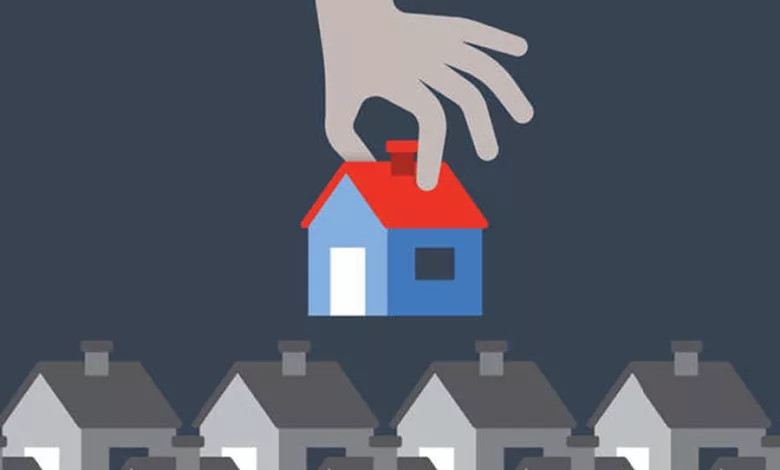
Housing has always been a critical issue in India, with millions of people living in inadequate or unsanitary conditions, including slums and informal settlements.
To address this issue, the Indian government and various non-governmental organizations have launched a range of housing programs over the years. These programs aim to provide affordable and decent housing to low-income households and people living in vulnerable conditions.
In 2015, the Indian government launched the “Housing for All” scheme, which aims to provide affordable housing to all eligible beneficiaries by the year 2022. This scheme targets urban and rural areas, including slums, informal settlements, and low-income households.
The Housing for All scheme offers subsidies and incentives to encourage affordable housing development, including interest subsidies, credit-linked subsidies, and direct financial assistance.
Apart from the Housing for All scheme, several other housing programs have been launched by the Indian government, including the Pradhan Mantri Awas Yojana, National Urban Livelihoods Mission, Swachh Bharat Mission, and Smart Cities Mission.
These programs focus on different aspects of the housing issue, such as improving the living conditions of slum dwellers, providing employment and skill development opportunities, promoting urban cleanliness, and developing smart cities.
Non-governmental organizations also play a significant role in addressing the housing crisis in India. Habitat for Humanity India, for example, works with low-income families to build and repair homes, provide disaster response and risk reduction, and promote community development. World Vision India’s Shelter for Urban Homeless Program aims to provide emergency and transitional shelters for homeless people in urban areas.
Overall, these housing programs play a critical role in addressing the housing crisis in India. However, there is still a long way to go in achieving the goal of providing affordable and decent housing for all. As India continues to urbanize and grow, there is an urgent need to address the housing issue and provide sustainable solutions to ensure that all citizens have access to safe and decent housing.
- Pradhan Mantri Awas Yojana (PMAY)
Launched in 2015, the Pradhan Mantri Awas Yojana (PMAY) is one of the most ambitious housing schemes in India. Its primary objective is to provide affordable housing to the urban poor and homeless by 2022. 
The scheme targets the lower income groups, economically weaker sections, and women belonging to these sections of society. The government offers subsidies on interest rates to encourage people to buy homes, especially in urban areas. The scheme provides assistance to build houses or avail loans for the construction of houses.
- Rajiv Awas Yojana (RAY)
The Rajiv Awas Yojana (RAY) was launched in 2009 with the aim of creating a slum-free India. The scheme targets the urban poor and homeless population who are living in slums or are at risk of becoming homeless. It offers basic amenities such as drinking water, sanitation, electricity, and healthcare facilities to the slum dwellers.
The scheme also aims to provide affordable housing to the urban poor by offering them access to credit, land, and building materials.
- Jawaharlal Nehru National Urban Renewal Mission (JNNURM)
The Jawaharlal Nehru National Urban Renewal Mission (JNNURM) was launched in 2005 with the aim of improving the urban infrastructure and the quality of life in cities.
The scheme covers 63 cities in India and targets the urban poor by providing them with basic amenities such as housing, water supply, sanitation, and healthcare facilities. The scheme also promotes the use of renewable energy and the development of urban transport.
- Atal Mission for Rejuvenation and Urban Transformation (AMRUT)
Launched in 2015, the Atal Mission for Rejuvenation and Urban Transformation (AMRUT) is a scheme aimed at improving the infrastructure of cities and towns.

The scheme focuses on providing basic amenities such as water supply, sewerage, drainage, and urban transport. The scheme targets 500 cities and towns in India and aims to provide universal access to these basic amenities by 2022. The scheme also promotes the use of renewable energy and encourages the development of green spaces in cities and towns.
- The National Urban Livelihoods Mission (NULM)
The National Urban Livelihoods Mission (NULM) was launched in 2013 with the aim of reducing poverty and vulnerability of the urban poor households by enabling them to access gainful self-employment and skilled wage employment opportunities.
The scheme seeks to provide training, credit, and subsidies to the urban poor to help them become self-employed or get employed in the formal sector. The scheme also supports the creation of self-help groups and provides assistance for skill development and entrepreneurship. NULM has been instrumental in improving the livelihoods of millions of urban poor in India.
- Smart Cities Mission (SCM)
Smart Cities Mission (SCM) was launched in 2015 with the aim of developing 100 smart cities across India. The objective is to create sustainable and livable cities that provide basic infrastructure, a clean and healthy environment, and a high quality of life for residents.
The scheme is being implemented through area-based development and pan-city initiatives. Under area-based development, specific areas are identified for development, while pan-city initiatives are focused on improving the overall quality of life in the city. The scheme is expected to have a significant impact on the urban infrastructure of India and improve the quality of life of its citizens.
- Housing for All
Housing for All Scheme was launched in 2015 with the aim of providing affordable housing to all citizens by 2022. The scheme has two components: Pradhan Mantri Awas Yojana (Urban) and Pradhan Mantri Awas Yojana (Gramin).
The urban component aims to provide affordable housing to urban poor households, while the rural component aims to provide housing to the homeless and those living in kutcha houses.
The scheme offers a subsidy on home loans, which makes it easier for low-income households to buy homes. The scheme is expected to address the issue of homelessness and provide affordable housing to millions of households in India.
- Swachh Bharat Mission (SBM):
Launched in 2014, the Swachh Bharat Mission is a government initiative aimed at achieving a cleaner and more hygienic India. The mission has two components – Swachh Bharat Abhiyan (Clean India Campaign) and Swachh Bharat Gramin (Rural Clean India Campaign).
The mission aims to eliminate open defecation, improve solid waste management, and promote behavioral changes towards cleanliness and sanitation.
The mission has been successful in creating awareness among the citizens about the importance of hygiene and cleanliness. The government has provided financial assistance to the states and local bodies to implement the mission. The mission has also been successful in generating employment opportunities for the people through the construction of toilets and other sanitation-related infrastructure.
- National Rural Housing Mission (NRHM):
Launched in 2013, the National Rural Housing Mission is a government initiative aimed at providing affordable housing to the rural poor. The mission aims to provide a minimum of one pucca house to every rural household by 2022. The mission provides financial assistance to the rural poor to construct their houses.
The mission has been successful in providing housing to the rural poor, especially those belonging to Scheduled Castes and Scheduled Tribes. The government has also provided training to the rural poor on construction techniques, which has helped them to construct their houses at a lower cost.
- Sardar Patel Urban Housing Mission:
Launched in 2015, the Sardar Patel Urban Housing Mission is a government initiative aimed at providing affordable housing to the urban poor. The mission aims to provide a minimum of one pucca house to every urban household living in slums by 2022. The mission provides financial assistance to the urban poor to construct their houses.
The mission has been successful in providing housing to the urban poor, especially those living in slums. The government has also provided training to the urban poor on construction techniques, which has helped them to construct their houses at a lower cost.
- Mukhyamantri Gramin Awas Yojana (MGAY):
Launched in 2021, the Mukhyamantri Gramin Awas Yojana is a government initiative aimed at providing affordable housing to the rural poor in the state of Bihar. The mission aims to provide a minimum of one pucca house to every rural household by 2022. The mission provides financial assistance to the rural poor to construct their houses.
The mission has been successful in providing housing to the rural poor in Bihar. The government has also provided training to the rural poor on construction techniques, which has helped them to construct their houses at a lower cost. The mission has also generated employment opportunities for the people of Bihar through the construction of houses and other infrastructure.
- Mukhya Mantri Jan Kalyan Yojana (MMJKY):
Mukhya Mantri Jan Kalyan Yojana is a housing scheme launched by the Bihar government to provide affordable houses to people belonging to the economically weaker section of society. The scheme was launched in 2017, and its main objective is to provide houses to people living in slum areas and dilapidated buildings. 
The scheme is being implemented by the Bihar Urban Development and Housing Department. The government provides a subsidy of up to Rs. 1.2 lakh for constructing a house under the scheme. The scheme has benefited thousands of families in Bihar by providing them with a decent living space.
- Chief Minister’s Samagra Gramya Unnayan Yojana (CMSGUY):
The Chief Minister’s Samagra Gramya Unnayan Yojana is a rural housing scheme launched by the Assam government. The scheme was launched in 2017 and aims to provide pucca houses to families living in rural areas of the state.
The government provides a subsidy of up to Rs. 1.3 lakh to eligible families for the construction of houses. The scheme has been successful in providing housing to many families in rural areas of Assam, thereby improving their living conditions.
- Indira Awas Yojana (IAY):
Indira Awas Yojana is a rural housing scheme launched by the Government of India in 1985. The scheme aims to provide financial assistance to families living below the poverty line in rural areas to construct their own houses.
The government provides a subsidy of up to Rs. 1.2 lakh for the construction of houses under the scheme. The scheme has been successful in providing housing to many families living in rural areas, thereby improving their living conditions.
- Bhagat Puran Singh Sehat Bima Yojana:
Bhagat Puran Singh Sehat Bima Yojana is a health insurance scheme launched by the Punjab government for the poor and needy families of the state. The scheme was launched in 2017 and aims to provide health insurance cover to families living below the poverty line. 
The government provides an insurance cover of up to Rs. 50,000 per annum for a family of five members. The scheme has been successful in providing health insurance cover to many families in Punjab, thereby improving their access to healthcare services.
- National Slum Development Programme (NSDP):
The National Slum Development Programme (NSDP) was launched by the Government of India in 1997 to provide basic civic amenities to slum dwellers and improve their living conditions.
The program aims to provide basic amenities such as water supply, sanitation, and electricity to slum dwellers. The NSDP has been successful in providing housing and basic services to a large number of slum dwellers across the country.
- Pradhan Mantri Gramin Awaas Yojana (PMGAY):
The Pradhan Mantri Gramin Awaas Yojana (PMGAY) is a rural housing scheme launched by the government of India in 2016. The objective of this scheme is to provide pucca houses to all eligible rural households by 2022.
The scheme aims to provide financial assistance to eligible households to construct their own houses. PMGAY also aims to provide basic amenities such as toilets, drinking water, and electricity to rural households.
- Pradhan Mantri Gramin Sadak Yojana (PMGSY):
The Pradhan Mantri Gramin Sadak Yojana (PMGSY) is a rural roads scheme launched by the government of India in 2000. The objective of this scheme is to provide all-weather road connectivity to eligible unconnected habitations in rural areas.
PMGSY aims to improve access to markets, schools, and healthcare facilities in rural areas. The scheme has been successful in connecting many remote and hilly areas of the country.
- Habitat for Humanity India:
Habitat for Humanity India is a non-profit organization that works towards providing housing solutions to low-income families. The organization works towards creating safe and affordable housing for families in need.
Habitat for Humanity India works in partnership with communities and other organizations to build houses for the homeless and those living in inadequate housing conditions.
- World Vision India
World Vision India is a well-known humanitarian organization that has been operating in India since 1958. Among its many initiatives, the Shelter for Urban Homeless Program is an important one that aims to provide safe, secure and affordable housing for urban homeless people across India. The program operates in several states across the country and has been successful in helping thousands of homeless people to obtain safe shelter.
The Shelter for Urban Homeless Program is a multi-faceted program that takes a holistic approach to providing housing for the urban homeless. It not only provides shelter but also aims to provide other essential services such as healthcare, education, and livelihood support to help the homeless individuals to rebuild their lives.
The program has a four-step process that starts with identifying and surveying the homeless population in urban areas. Once identified, the homeless individuals are provided with temporary shelters and basic amenities such as food, clothing, and healthcare.
In the second stage, the program focuses on providing permanent shelters to the homeless. These shelters are constructed in consultation with the local communities and are designed to be safe, secure and affordable. The shelters are equipped with basic amenities such as sanitation facilities, clean water supply, and electricity.
In the third stage, the program provides education and skill-building programs to the homeless individuals to help them become self-sufficient. These programs include vocational training, entrepreneurship development, and financial literacy training. The aim is to provide the homeless with the skills and resources they need to earn a livelihood and support themselves and their families.
Finally, the program provides ongoing support and monitoring to ensure that the homeless individuals are able to sustain themselves in their new homes. This includes regular health check-ups, counseling, and assistance with accessing government schemes and benefits.
World Vision India’s Shelter for Urban Homeless Program has been successful in providing safe and affordable housing to thousands of homeless individuals in India.
The program’s holistic approach, which includes providing education and livelihood support, has helped many homeless individuals to rebuild their lives and become self-sufficient. The program is a great example of how a multi-faceted approach to housing can be effective in addressing the needs of the urban homeless population in India.
In Conclusion
The above-mentioned housing schemes have been launched by the respective state governments to provide affordable housing to people belonging to the economically weaker sections of society. These schemes have been successful in providing housing to many families living in rural and urban areas of the country, thereby improving their living conditions.
These schemes have not only provided shelter to the people but have also improved their access to basic amenities like sanitation, water, and electricity. These schemes have played a vital role in the overall development of the country by providing a decent living space to the poor and needy sections of society.




